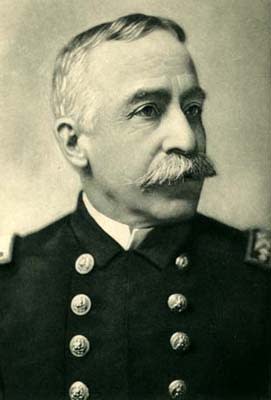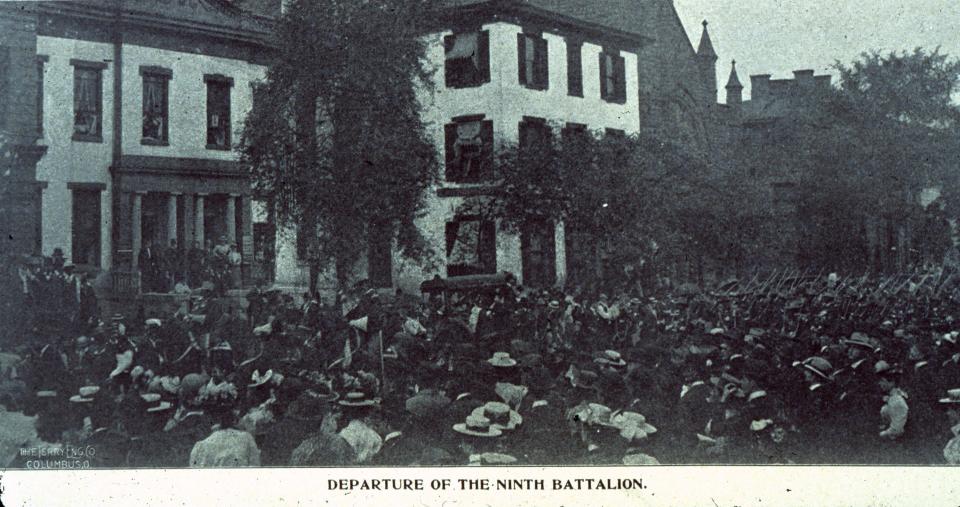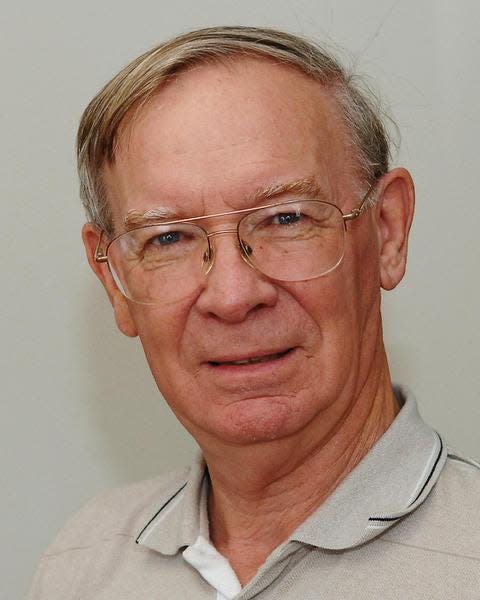Where did Dewey Beach get its name? The saga of an admired admiral
- Oops!Something went wrong.Please try again later.
“Special telephone from Rehoboth reports quiet along the coast,” The Lewes newspaper, the Delaware Pilot, breathlessly reported on May 7, 1898, “No Spanish Cruisers have been seen by the Life-Saving men.”
On Feb. 15, 1898, the battleship Maine was ripped apart by an explosion of unknown origin; and when the wreckage slipped beneath the waters of Havana harbor, it carried 260 American sailors with it. The outrage over the destruction of the Maine precipitated a war with Spain, which owned Cuba at that time.
When war was declared on April 25, 1898, residents of Lewes and Rehoboth feared that a Spanish fleet stationed in Cuba might steam north and shell coastal communities. A flotilla of five armed vessels, consisting of a gunboat, two torpedo boats and two patrol boats was assembled to protect the coast and the entrance to Delaware Bay.
The patrol boats were ordered to cruise up and down the coast and to report the approach of Spanish warships to the gunboat and torpedo boats which were stationed at the Delaware Breakwater. The presence of this mosquito fleet of armed vessels reassured coastal residents that measures were being taken to protect the coast.

The Delaware Pilot told its readers, “There is no necessity for a war scare at Rehoboth, ample protect will be furnished by the gunboat at the mouth of the bay and this delightful resort will probably be visited by more people this season than heretofore.”
In 1898, most of the Delaware coast was an undeveloped line of pristine beach and undisturbed dunes. The train brought thousands of vacationers to Rehoboth Beach each summer, but the resort was little more than a village.
South of Rehoboth, the coastal bay pinched close to the beach, the 60-room Douglass House sat a short distance from the surf and a Life-Saving Station stood watch over a nameless cluster of cottages. The buildings on the narrow stretch of sand were literally at the end of the road.

Less than a week after war was declared, Commodore Dewey led the Asiatic squadron into Manila Bay and destroyed the Spanish fleet.
In a rare two-column headline, the Delaware Pilot reported in May 1898, “Battle of Manila. Commodore Dewey’s Victory Over Spanish Fleet Complete.”
The Lewes newspaper went on to report, “The American squadron, commanded by Commodore (George) Dewey, won a complete and glorious victory over the Spanish fleet in the Philippines Sunday. The fighting was of the fiercest character. The bravery of the American seamen was of the highest character, and, led by the intrepid Dewey, inflicted upon the enemy a veritable rout.”
Dewey was promoted to admiral, and he was proclaimed to be the greatest American naval hero since John Paul Jones.

A naming frenzy spread across the United States, as towns and streets began to be named after the hero of Manila Bay. On Oct. 29, 1898, the Delaware Pilot reported, “The new street running from South street to King … is completed, and will be known as Dewey Avenue. In the near future another street will be opened at block east of this one and will be named Manila Avenue.”
Longtime resident Lucy G. Branham recalled in the May 18, 1939, issue of the Delaware, “Mr. Allee Dick, who had a general grocery in Rehoboth, suggested that the name Dewey Beach be applied to the inhabited area along the beach front to the bay, south of ‘Rehoboth Village’ proper.”
With Dewey Beach firmly on the map, the naming frenzy subsided on the Delaware coast.
Principal sources
Delaware Pilot, April 30, May 7, and 29, 1898; May 18, 1939.
Barbara Quillen Dougherty, ed., Dewey Beach, History and Tales, pp. 13-14.
More:'Times they're a chain-gin': A guide to today's coastal economy
More:We've got your Summer Bucket List to level up your fun this season
This article originally appeared on Salisbury Daily Times: Where did Dewey Beach get its name? The saga of an admired admiral

